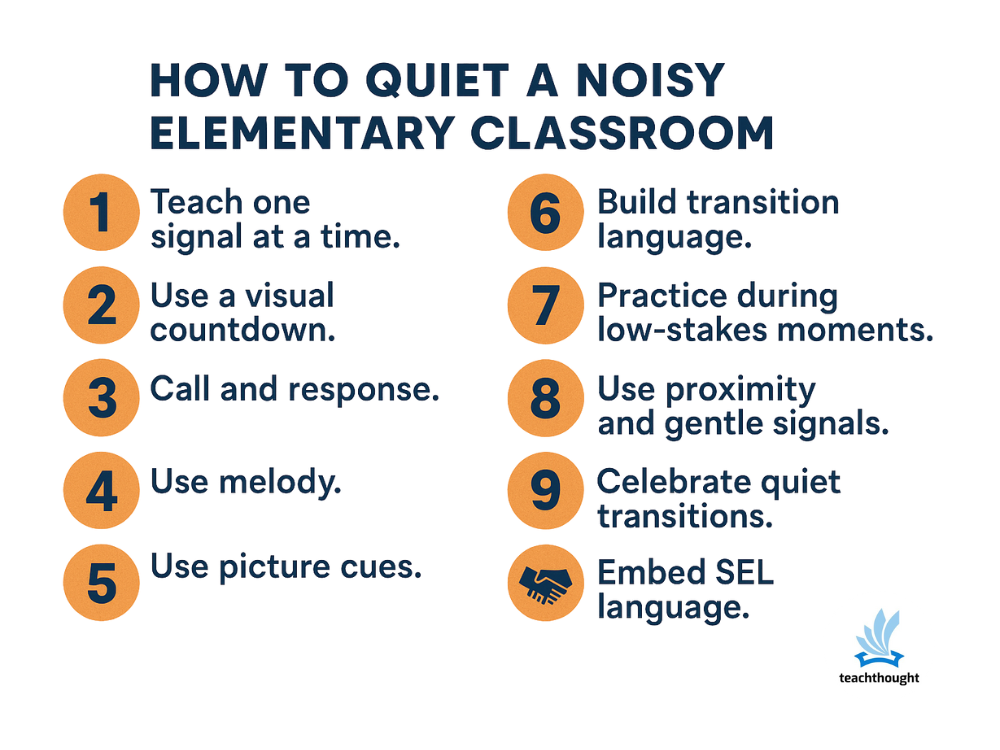‘Noise’ is part of learning in an elementary classroom.
This is especially true when students transition from movement to seated work or shift between collaborative and independent tasks.
The goal is not silence. The goal is being able to bring everyone together quickly and calmly so learning stays on track.
Teach one routine at a time, practice when students are already calm, and use consistent language so signals feel predictable and safe.

Related:
Classroom Management •
Social Emotional Learning •
Best Articles About Classroom Management •
20 Ways To Get A Noisy Classroom’s Attention
Ways to get an elementary classroom quiet
Teach the routine, practice it briefly each day, and keep the language the same. The aim is quick, calm shifts between activity and attention so learning time stays intact.
Frequently Asked Questions
How do I quiet a noisy elementary classroom quickly?
Use one consistent signal or routine students recognize immediately—such as a raised hand, chime, or visual cue—and practice it when the class is calm so it becomes automatic.
What should I do if students don’t respond to my signal?
Reset expectations during a calm moment. Re-teach the routine, model it, and practice in short bursts. Avoid adding new cues until the main signal works reliably.
How do I keep classroom noise productive rather than chaotic?
Differentiate between healthy learning noise (discussion, collaboration) and distraction. Set clear volume expectations—like a “voice level chart”—and use transitions to refocus quickly when needed.
TeachThought Staff 2025-11-02 04:47:48
Source link

